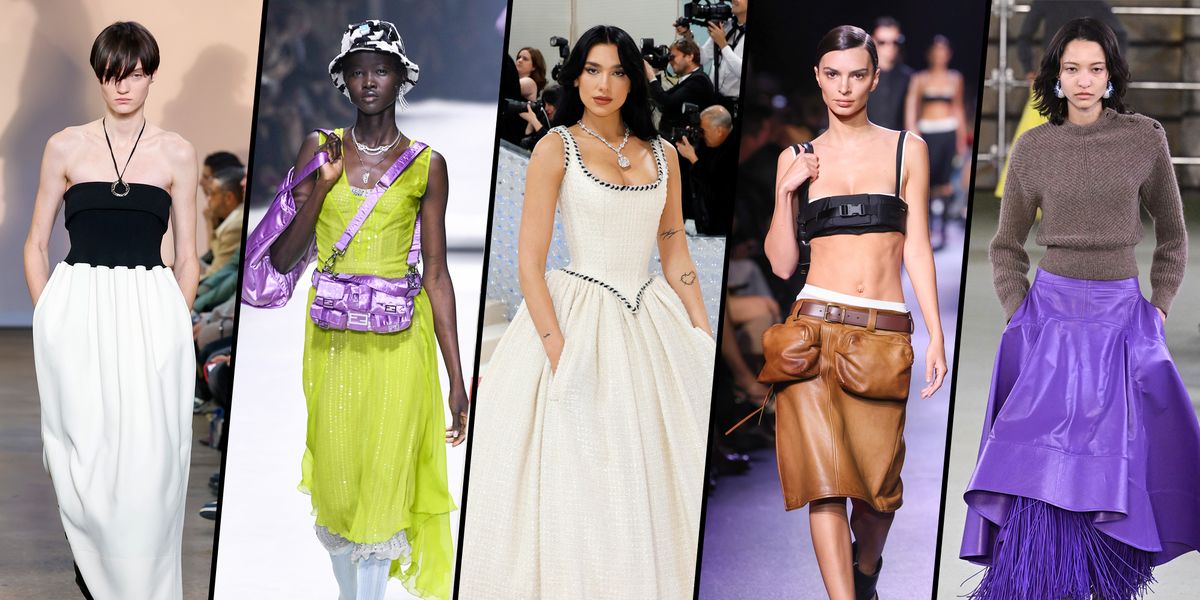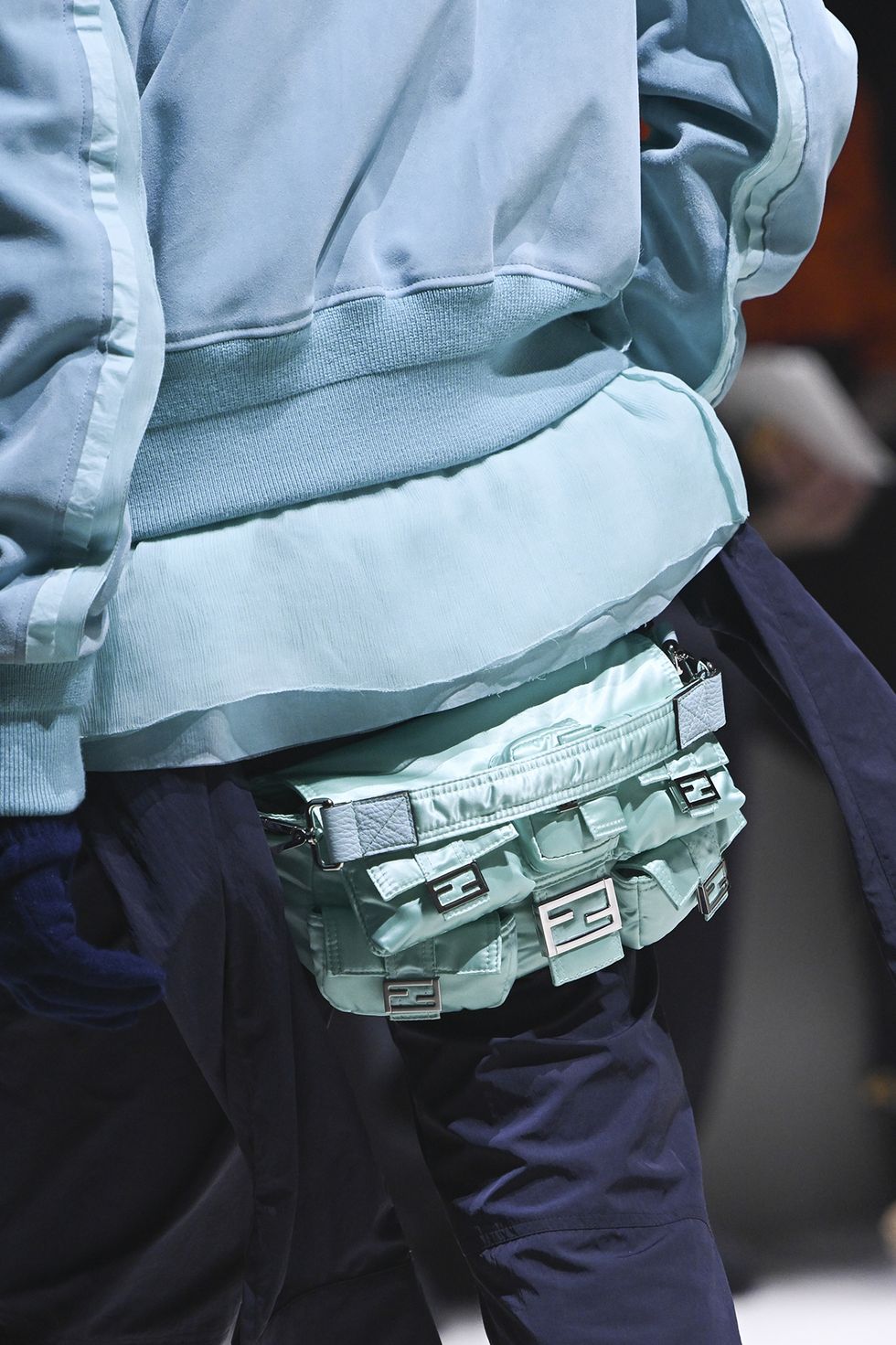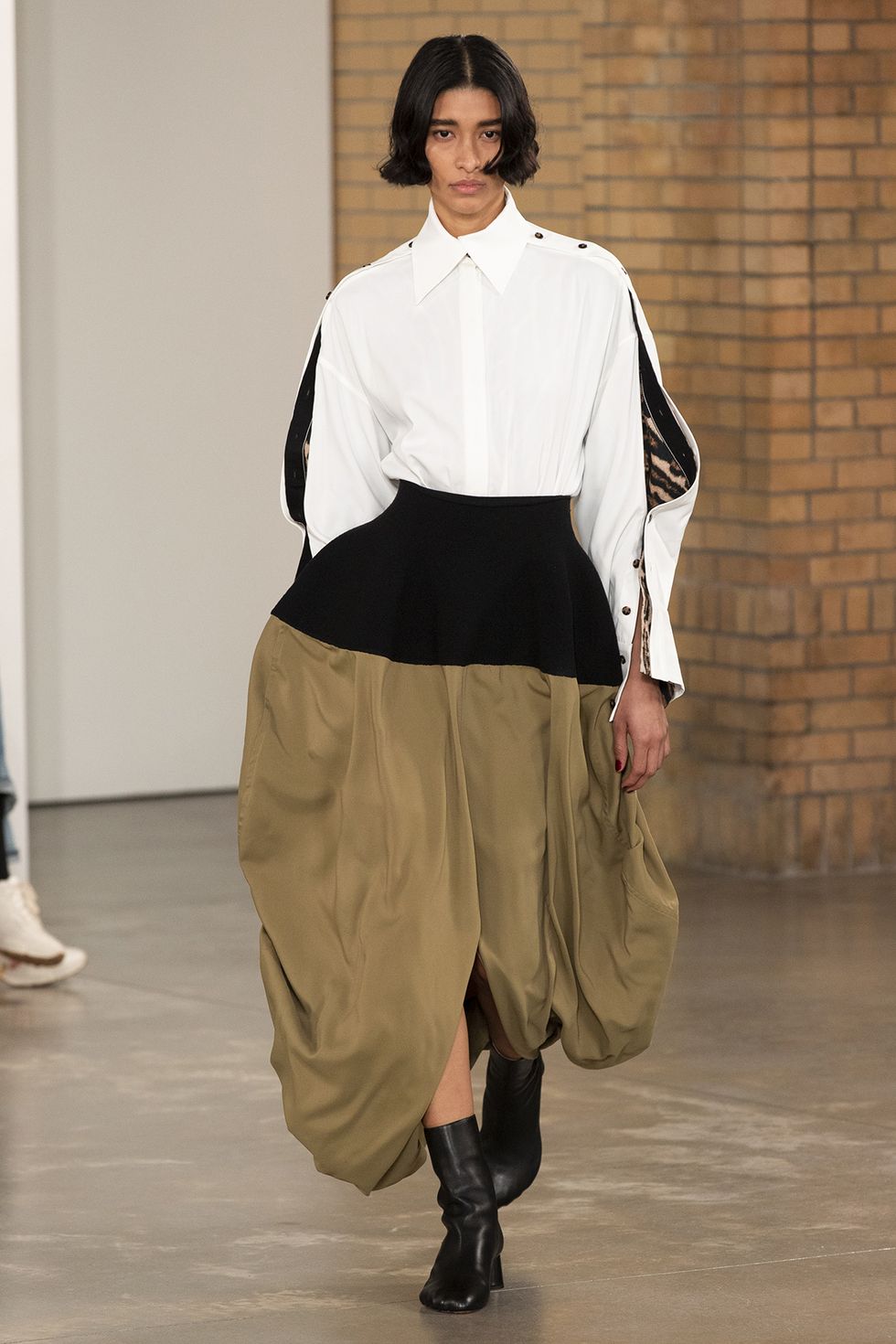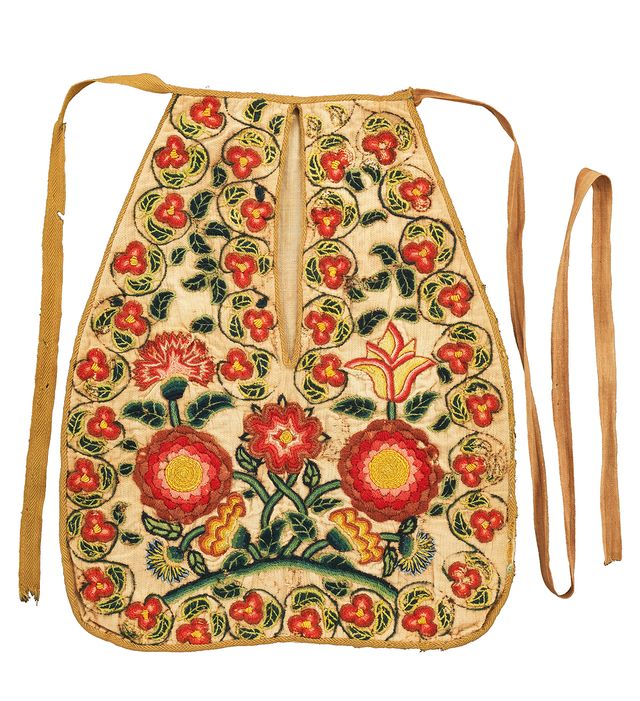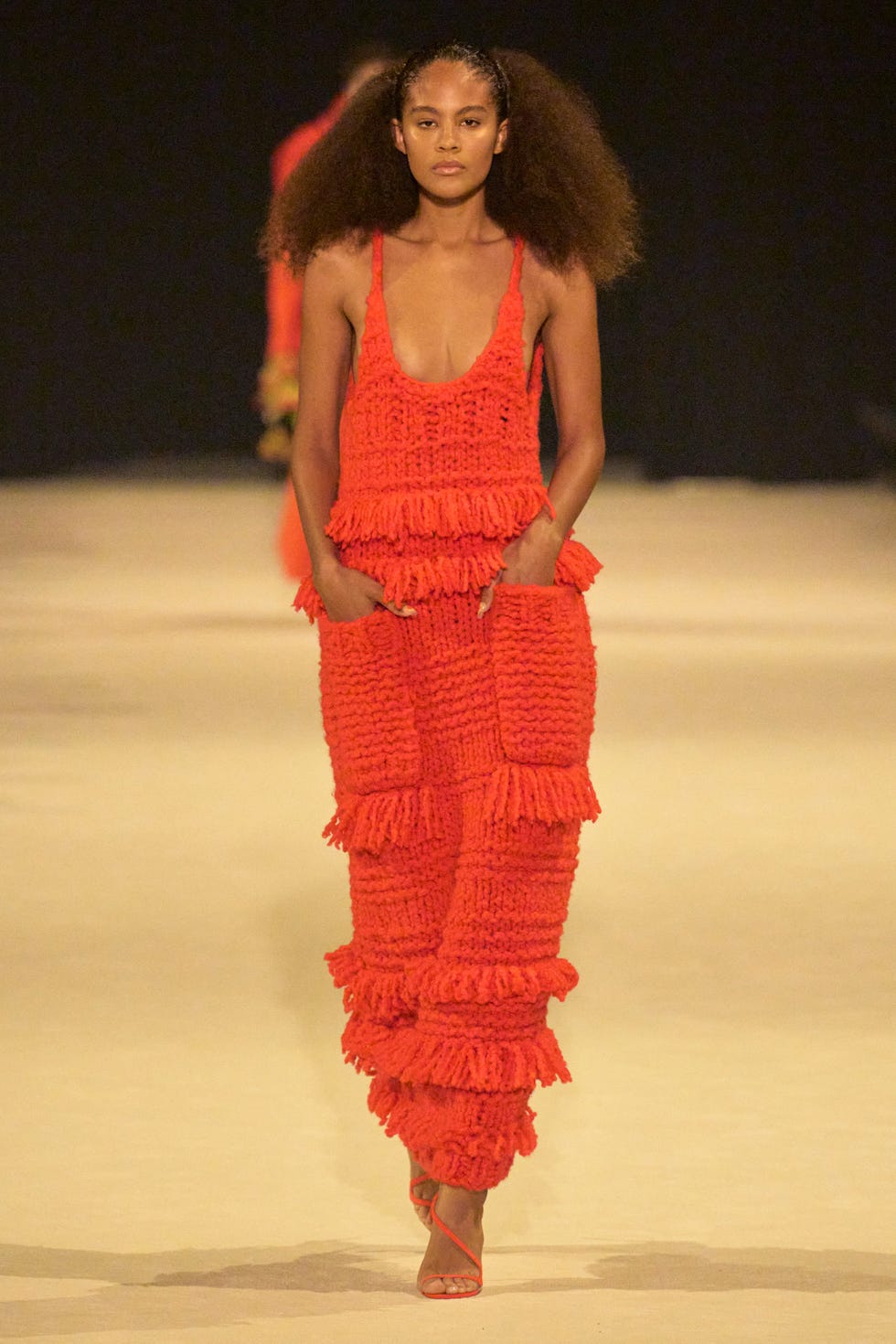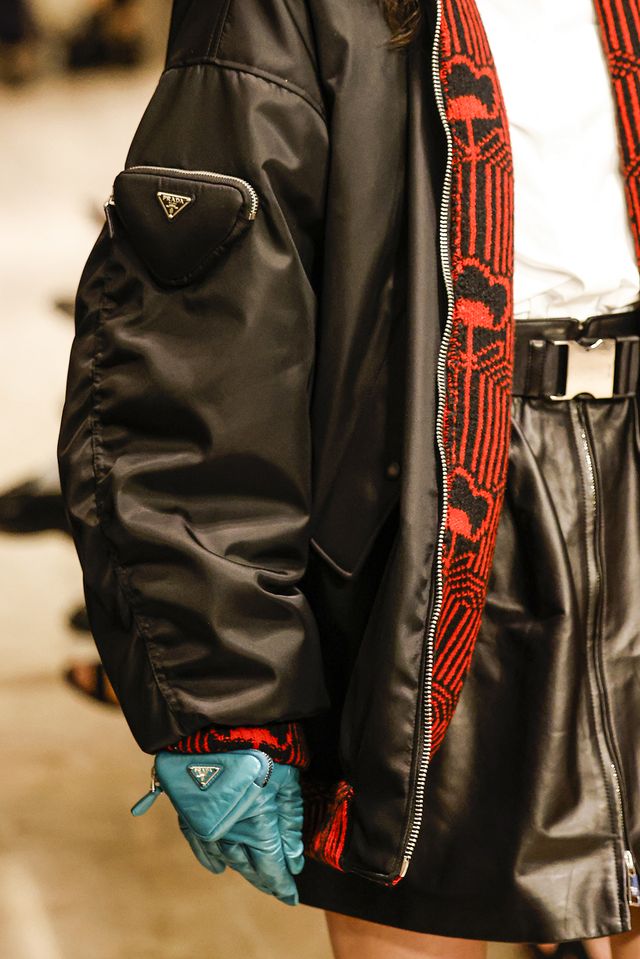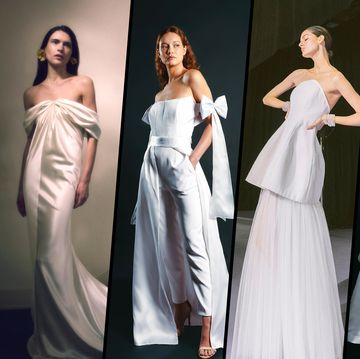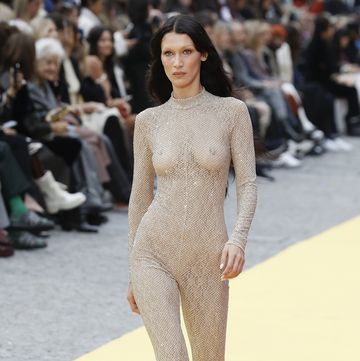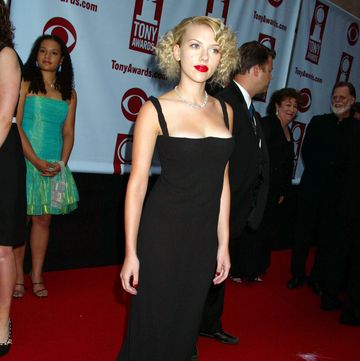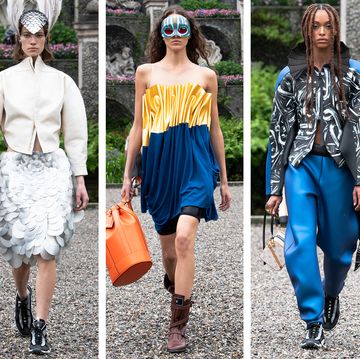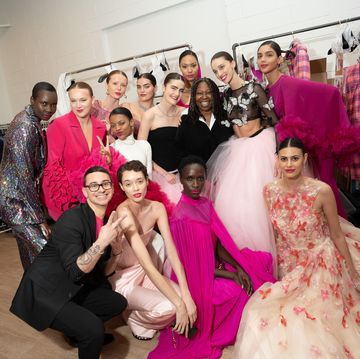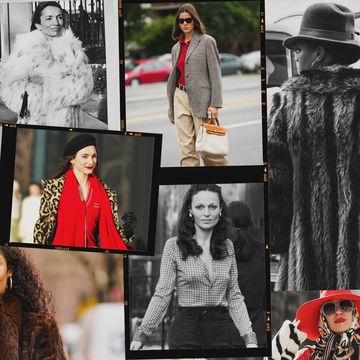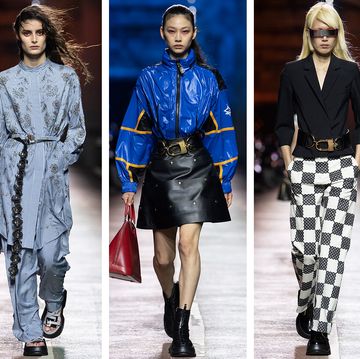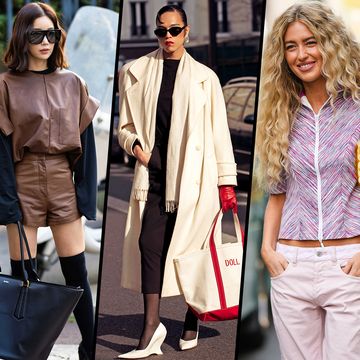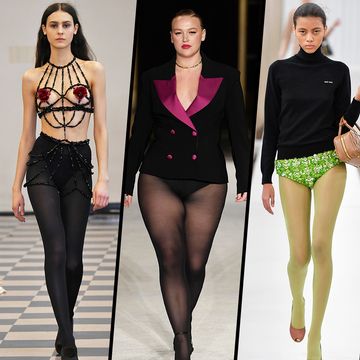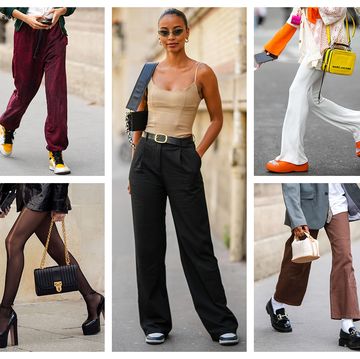Dua Lipa’s vintage Chanel dress at the Met Gala had pockets. And fashion’s fan-favorite designer Christopher John Rogers sent chunky knitted sets with enormous pockets down the runway just days before. Once a utilitarian symbol and now an embellishment, pockets have fast become this season’s most prominent ornamentation, popping up en masse on Miu Miu miniskirts, Dion Lee corsets, Blumarine minidresses, Isabel Marant shorts, and The Attico boots, among other things. They’re truly everywhere, hidden in plain sight. It used to be that you’d consider yourself lucky if your dress had pockets, but now, the form of portable storage has somehow transcended utilitarian status as the next It accessory.
In fact, pockets are now so ubiquitous, you could fully forgo handbags entirely and still be able to stash everything you need in your outfit. On the other hand, bags themselves are getting a pocket makeover, with labels like Fendi leading the charge with Baguettes quite literally covered in pockets.
It’s an interesting time for pockets to be omnipresent—as they stand for practicality and utility but also have deep roots in workwear fashion. Everyone is talking about quiet luxury, but the outrageous fashion pocket says something else completely. On an $8,000 distressed leather Miu Miu vest, for example, the pocket subverts the idea of practicality, but still offers up perhaps what is the biggest luxury in 2023: being hands-free. Another reason pockets are widespread? The fall 2023 collections put an emphasis on wearability and classic sophistication, as labels including Proenza Schouler, Fendi, The Row, and Bottega Veneta favored pocket-laden button-downs, suiting, and simple dresses—all with pockets. While brands like Coperni may have focused on theatrical fashion shows, others leaned into dressing for common sense sake, giving us a veritable sea of fashion pockets in the process.
It’s possible to trace the pocket obsession to the end of last year, when brands like Jaded London began adding excessive amounts of pockets to cargo pants. But these are not your cargos from the early 2000s—the pockets are decidedly chunkier and come in all different sizes, featured all over as a functional design element. Jaded London has since sold over 150,000 pairs, with fashion app Lyst naming the Parachutes as the fifth hottest women’s product of 2022. “Back in the 2000s, style icons like David and Victoria Beckham and Brad Pitt and Jennifer Aniston were wearing these baggy pants, and we elevated our designs by adding on very detailed pockets,” says Jaded London co-founder Jade Goulden. “There are 15 pockets on each pair of our parachute pants, and my favorite pocket has to be the AirPod pocket, which makes these an essential piece in our consumer’s wardrobe.”
And yet, the history of pockets in women’s fashion goes back even further, and represents something even more important. By the 17th century, women started wearing tie-on pockets. “The development of tie-on pockets during the 17th century was a defining moment for women, providing an extremely popular detachable accessory for carrying their possessions, similar to the function of handbags today,” per V&A’s exhibition “Bags: Inside Out.” According to fashion historian Einav Rabinovitch-Fox, “Very quickly, pockets assumed a gendered meaning. By the end of the 17th century, men had enjoyed a well-established tradition for sewn-in, specialized pockets in their garments, while women wore mostly tie-on external pockets in various sizes. As women’s detachable pockets began to disappear by the late 19th century, pockets started to symbolize independence, status, and mobility, and women’s rights advocates began to associate pockets with male privilege.”
By the 20th century, feminists and suffragists had aligned the pocket with voting privileges and equal rights. “Many of the suffragist clothing contained pockets, and they became a metaphor for the vote,” says Rabinovitch-Fox. In fact, “one described them as ‘women’s greatest lack’ and the biggest hindrance to women’s progress. The feminist connotation of pockets remained into the 20th century, when pockets came to symbolize freedom and independence.” Still, it was less than 100 years ago that the pockets we know of today—those seen in dresses and displayed prominently, not worn as tie-ons underneath clothing—became popular, in the 1930s and 1940s, to be exact. “Designers like Claire McCardell and Elizabeth Hawes, for example, designed clothes with pockets purposely, seeing it as part of their broader approach to fashion and how it should serve feminine needs,” says Rabinovitch-Fox.
If there’s one thing that has always been true in fashion, it’s that women want more pockets, and the timing is right that designers are finally overdelivering. “From what we’ve seen, the more the pockets, the more the customer loves them,” says Goulden. “Pockets as a feminist demand is not new, but as we see a resurgence of feminism in recent years and more women are reclaiming their bodies and calling for rights, we also see more and more women demand to have pockets in their clothes, framing it as a feminist demand,” adds Rabinovitch-Fox. “The industry finally realized that there is a market for that, and they are responding to these demands. Pockets make the clothes more expensive to make, so until there is an incentive from consumers to do it, the industry will not do it alone.”
Trend forecasters view the overzealous pocket obsession as a continuation of accessories morphing into clothing, and vice versa: “Through 2020 and lockdowns, we had the desire to get in and out of the house as efficiently as possible; meaning, put your phone and keys and necessities in your pocket,” explains trend forecaster Jessica Richards. “From the high-end market to the high street, we’ve seen the belt bag continue; we’ve seen Prada add pockets to gloves; so really, accessories for the past few years have been about how to add, in a sense, a wearable ‘pocket.’”
Just maybe, the pocket symbolizes the future of fashion in a bigger way than we realize. “As we navigate further into a cashless, virtually cardless, hybrid-working-model society, the need for streamlined efficiency will only continue to fuel pockets’ popularity,” says Richards. Interestingly, whether you realize it or not, the pocket in excess functions as a new form of futurism in fashion, possibly hinting at how our way of dressing will evolve. Still, if we give up handbags, pockets will have to become all the more decorative, collectible, and exciting. Fashion is never really just about form meets function, after all. Until then, we’ll be stashing our phones and wallets in our parachute cargo pants and stone-washed miniskirts.

